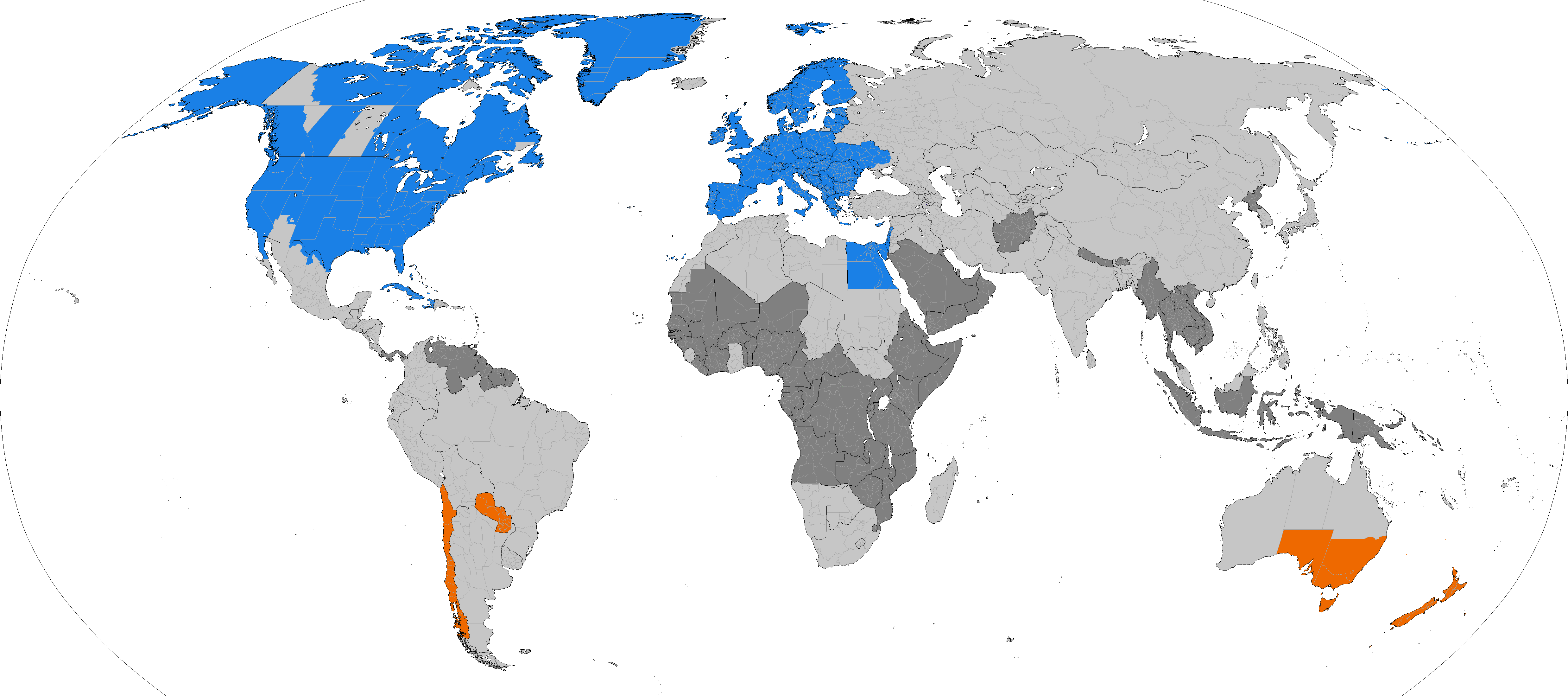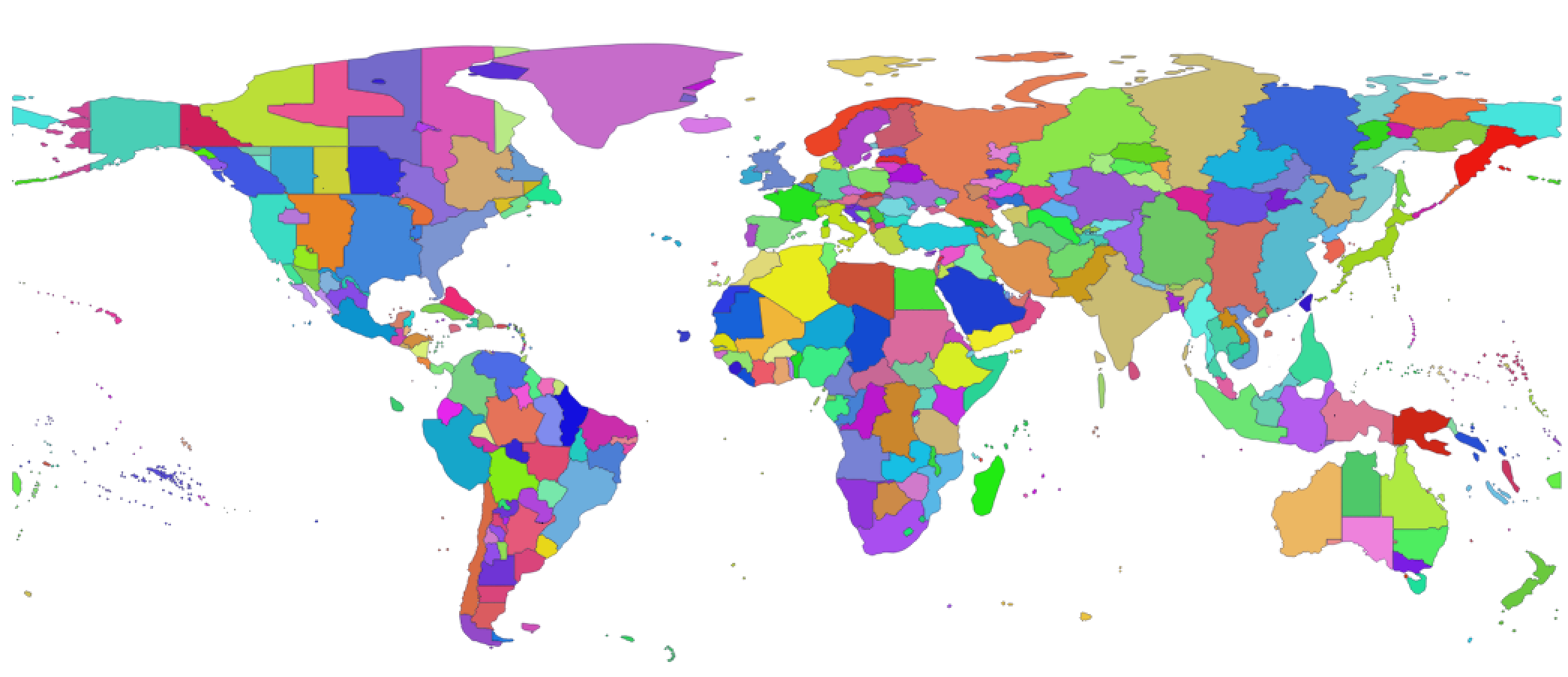|
Time In Jamaica
Jamaica Time (JAM) is the official time in Jamaica. It is five hours behind Coordinated Universal Time ( UTC−05:00).Timeanddate.co Retrieved January, 13, 2019 Jamaica has only one time zone and does not observe daylight saving time. During winter, Jamaican Time is equivalent to North American Eastern Standard Time, whereas in the summer it is equivalent to Central Daylight Time. IANA time zone database In the IANA time zone database The tz database is a collaborative compilation of information about the world's time zones, primarily intended for use with computer programs and operating systems. Paul Eggert is its current editor and maintainer, with the organizational backi ... Jamaica has the following time zone: * America/Jamaica (JM) References External linksTime in Jamaica {{Jamaica-stub ... [...More Info...] [...Related Items...] OR: [Wikipedia] [Google] [Baidu] |
Jamaica
Jamaica (; ) is an island country situated in the Caribbean Sea. Spanning in area, it is the third-largest island of the Greater Antilles and the Caribbean (after Cuba and Hispaniola). Jamaica lies about south of Cuba, and west of Hispaniola (the island containing the countries of Haiti and the Dominican Republic); the British Overseas Territory of the Cayman Islands lies some to the north-west. Originally inhabited by the indigenous Taíno peoples, the island came under Spanish rule following the arrival of Christopher Columbus in 1494. Many of the indigenous people either were killed or died of diseases, after which the Spanish brought large numbers of African slaves to Jamaica as labourers. The island remained a possession of Spain until 1655, when England (later Great Britain) conquered it, renaming it ''Jamaica''. Under British colonial rule Jamaica became a leading sugar exporter, with a plantation economy dependent on the African slaves and later their des ... [...More Info...] [...Related Items...] OR: [Wikipedia] [Google] [Baidu] |
Coordinated Universal Time
Coordinated Universal Time or UTC is the primary time standard by which the world regulates clocks and time. It is within about one second of mean solar time (such as UT1) at 0° longitude (at the IERS Reference Meridian as the currently used prime meridian) and is not adjusted for daylight saving time. It is effectively a successor to Greenwich Mean Time (GMT). The coordination of time and frequency transmissions around the world began on 1 January 1960. UTC was first officially adopted as CCIR Recommendation 374, ''Standard-Frequency and Time-Signal Emissions'', in 1963, but the official abbreviation of UTC and the official English name of Coordinated Universal Time (along with the French equivalent) were not adopted until 1967. The system has been adjusted several times, including a brief period during which the time-coordination radio signals broadcast both UTC and "Stepped Atomic Time (SAT)" before a new UTC was adopted in 1970 and implemented in 1972. This change also a ... [...More Info...] [...Related Items...] OR: [Wikipedia] [Google] [Baidu] |
Time Zone
A time zone is an area which observes a uniform standard time for legal, Commerce, commercial and social purposes. Time zones tend to follow the boundaries between Country, countries and their Administrative division, subdivisions instead of strictly following longitude, because it is convenient for areas in frequent communication to keep the same time. All time zones are defined as offsets from Coordinated Universal Time (UTC), ranging from UTC−12:00 to UTC+14:00. The UTC offset, offsets are usually a whole number of hours, but a few zones are offset by an additional 30 or 45 minutes, such as in Indian Standard Time, India, Time in Australia, South Australia and Nepal Time, Nepal. Some areas of higher latitude use daylight saving time for about half of the year, typically by adding one hour to local time during spring (season), spring and summer. List of UTC offsets In the table below, the locations that use daylight saving time (DST) are listed in their UTC offse ... [...More Info...] [...Related Items...] OR: [Wikipedia] [Google] [Baidu] |
Daylight Saving Time
Daylight saving time (DST), also referred to as daylight savings time or simply daylight time (United States, Canada, and Australia), and summer time (United Kingdom, European Union, and others), is the practice of advancing clocks (typically by one hour) during warmer months so that darkness falls at a later clock time. The typical implementation of DST is to set clocks forward by one hour in the spring ("spring forward"), and to set clocks back by one hour in the fall ("fall back") to return to standard time. As a result, there is one 23-hour day in early spring and one 25-hour day in the middle of autumn. The idea of aligning waking hours to daylight hours to conserve candles was first proposed in 1784 by U.S. polymath Benjamin Franklin. In a satirical letter to the editor of ''The Journal of Paris'', Franklin suggested that waking up earlier in the summer would economize on candle usage; and calculated considerable savings. In 1895, New Zealand entomologist and astronome ... [...More Info...] [...Related Items...] OR: [Wikipedia] [Google] [Baidu] |
Eastern Time Zone
The Eastern Time Zone (ET) is a time zone encompassing part or all of 23 states in the eastern part of the United States, parts of eastern Canada, the state of Quintana Roo in Mexico, Panama, Colombia, mainland Ecuador, Peru, and a small portion of westernmost Brazil in South America, along with certain Caribbean and Atlantic islands. Places that use: * Eastern Standard Time (EST), when observing standard time (autumn/winter), are five hours behind Coordinated Universal Time ( UTC−05:00). * Eastern Daylight Time (EDT), when observing daylight saving time (spring/summer), are four hours behind Coordinated Universal Time ( UTC−04:00). On the second Sunday in March, at 2:00 a.m. EST, clocks are advanced to 3:00 a.m. EDT leaving a one-hour "gap". On the first Sunday in November, at 2:00 a.m. EDT, clocks are moved back to 1:00 a.m. EST, thus "duplicating" one hour. Southern parts of the zone (Panama and the Caribbean) do not observe daylight saving time ... [...More Info...] [...Related Items...] OR: [Wikipedia] [Google] [Baidu] |
Central Time Zone
The North American Central Time Zone (CT) is a time zone in parts of Canada, the United States, Mexico, Central America, some Caribbean Islands, and part of the Eastern Pacific Ocean. Central Standard Time (CST) is six hours behind Coordinated Universal Time (UTC). During summer, most of the zone uses daylight saving time (DST), and changes to Central Daylight Time (CDT) which is five hours behind UTC. The largest city in the Central Time Zone is Mexico City; the Mexico City metropolitan area is the largest metropolitan area in the zone and in North America. Regions using (North American) Central Time Canada The province of Manitoba is the only province or territory in Canada that observes Central Time in all areas. The following Canadian provinces and territories observe Central Time in the areas noted, while their other areas observe Eastern Time: * Nunavut (territory): western areas (most of Kivalliq Region and part of Qikiqtaaluk Region) * Ontario (province): a port ... [...More Info...] [...Related Items...] OR: [Wikipedia] [Google] [Baidu] |
IANA Time Zone Database
The tz database is a collaborative compilation of information about the world's time zones, primarily intended for use with computer programs and operating systems. Paul Eggert is its current editor and maintainer, with the organizational backing of ICANN. The tz database is also known as tzdata, the zoneinfo database or IANA time zone database, and occasionally as the Olson database, referring to the founding contributor, Arthur David Olson. Its uniform naming convention for time zones, such as ''America/New_York'' and ''Europe/Paris'', was designed by Paul Eggert. The database attempts to record historical time zones and all civil changes since 1970, the Unix time epoch. It also includes transitions such as daylight saving time, and also records leap seconds. The database, as well as some reference source code, is in the public domain. New editions of the database and code are published as changes warrant, usually several times per year. Data structure File formats The ... [...More Info...] [...Related Items...] OR: [Wikipedia] [Google] [Baidu] |
America/Jamaica
Jamaica Time (JAM) is the official time in Jamaica. It is five hours behind Coordinated Universal Time ( UTC−05:00).Timeanddate.co Retrieved January, 13, 2019 Jamaica has only one time zone and does not observe daylight saving time. During winter, Jamaican Time is equivalent to North American Eastern Standard Time, whereas in the summer it is equivalent to Central Daylight Time. IANA time zone database In the IANA time zone database The tz database is a collaborative compilation of information about the world's time zones, primarily intended for use with computer programs and operating systems. Paul Eggert is its current editor and maintainer, with the organizational backi ... Jamaica has the following time zone: * America/Jamaica (JM) References External linksTime in Jamaica {{Jamaica-stub ... [...More Info...] [...Related Items...] OR: [Wikipedia] [Google] [Baidu] |


